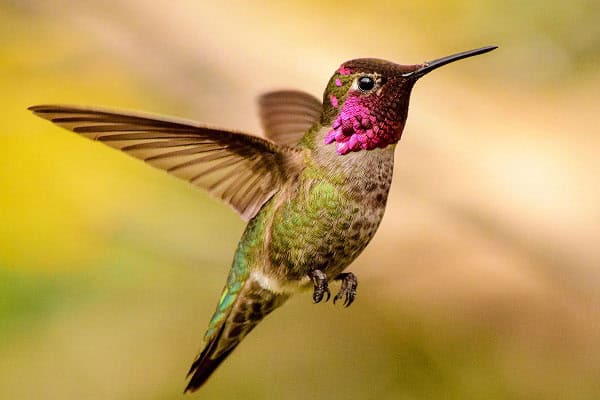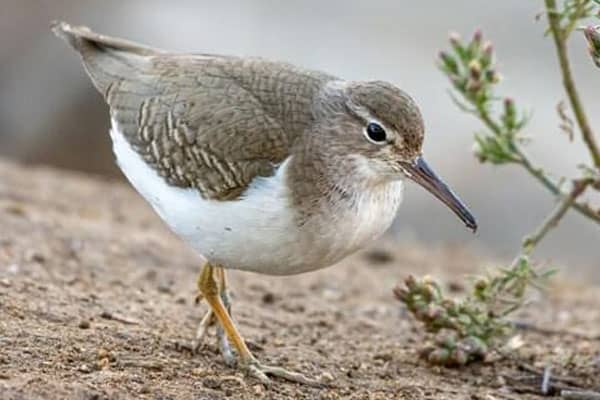Have you ever wondered what captivating secrets lie within the world of small birds with long necks? In this comprehensive article, we’ll embark on a journey to unravel the mysteries and marvels of these feathered wonders. From the diminutive hummingbirds to the stately black-necked stilts, we’ll dive into the diverse array of shapes, sizes, and behaviors that make these small birds with long necks truly unique.
What is it about these captivating creatures that has birdwatchers and nature enthusiasts alike enthralled? Join us as we explore the spotted sandpiper, the solitary sandpiper, the least bittern, the common gallinule, and the elusive Wilson’s snipe, uncovering the fascinating traits, habitats, and adaptations that make them so intriguing. Prepare to be inspired by the natural beauty that surrounds us and to deepen your appreciation for the incredible diversity of the avian world.
Key Takeaways
- Discover the captivating diversity of small birds with long necks, from hummingbirds to black-necked stilts.
- Explore the unique traits, habitats, and adaptations that make these feathered creatures so remarkable.
- Gain a deeper understanding and appreciation for the natural wonders that surround us.
- Learn about the important ecological roles played by these small birds with long necks.
- Be inspired to protect and conserve the habitats that sustain these incredible species.
Marvels of the Avian World
The world of small birds with long necks is a true marvel of the avian kingdom. These feathered creatures come in a captivating array of sizes, shapes, and behaviors, each offering a unique perspective on the incredible diversity of nature. From the lightning-fast hummingbirds to the stealthy solitary sandpipers, these small birds with long necks have evolved to thrive in a wide range of habitats, showcasing the adaptability and resilience of life on our planet.
Captivating Diversity in Feathered Beings
As we delve into the details of these fascinating species, we’ll unravel the intricate connections between their physical traits, feeding habits, and ecological roles, gaining a deeper understanding of the natural wonders that surround us. These small birds with long necks have mastered the art of survival, carving out their unique niches in the vast and diverse avian world.
Unraveling Nature’s Wonders
From the vibrant hues of the hummingbirds to the stealthy camouflage of the Wilson’s snipe, each species showcases the incredible adaptations that have enabled them to thrive in their respective environments. By exploring the marvels of these small birds with long necks, we gain a renewed appreciation for the intricate web of life that sustains our planet.
Hummingbirds: Tiny Marvels on Wings

Hummingbirds are undoubtedly one of the most captivating small birds with long necks. These diminutive wonders are the smallest birds in the world, with some hummingbird species measuring just a few inches in length and weighing as little as a penny. Despite their tiny size, hummingbirds are true masters of flight, capable of hovering, flying backward, and performing incredible aerial acrobatics.
How Small Are They?
The size of hummingbirds is truly astonishing. Some species, such as the bee hummingbird, are so small that they could easily fit in the palm of your hand. These tiny birds weigh less than a AA battery, yet their rapid wing-flapping and exceptional metabolism allow them to perform feats of flight that seem almost impossible for their diminutive frames.
How Do They Eat?
Hummingbirds’ long, slender necks and specialized beaks allow them to feed on nectar from flowers, using their rapid wing-flapping to hover in place. They are true experts at extracting the sugary nectar that sustains their high-energy lifestyles, darting from blossom to blossom in search of their next meal.
Where Do Hummingbirds Live?
Hummingbirds can be found in various regions of the Americas, from the icy landscapes of Alaska to the tropical forests of South America. This remarkable adaptability showcases the hummingbird’s ability to thrive in a wide range of habitats, each offering its own unique challenges and resources.
What Makes Them Fast?
The hummingbird’s lightning-fast metabolism and exceptional flying abilities are what truly set them apart as marvels of the avian world. Their rapid wing-flapping, sometimes upwards of 80 beats per second, allows them to hover in place, dart around obstacles, and perform aerial maneuvers that leave birdwatchers in awe. This combination of speed, agility, and adaptability is a testament to the incredible evolution and diversity of these tiny yet captivating birds.
Spotted Sandpiper: A Dainty Delight

The spotted sandpiper is a delightful small bird with a long neck that is often found near bodies of water, such as rivers, lakes, and coastlines. These graceful shorebirds are relatively small, typically measuring around 7-8 inches in length, with a slender build and long, thin legs. Spotted sandpipers are known for their distinctive bobbing motion, which they use to maintain balance and search for food.
These charming birds can be found across North America, from Canada to Mexico, and their presence often indicates a healthy aquatic ecosystem. They primarily feed on insects, spiders, and small crustaceans, using their long necks to reach into shallow waters and mudflats. The spotted sandpiper is a true delight to observe, with its graceful movements and adaptability to various sandpiper habitats.
| Trait | Description |
|---|---|
| Size | Typically 7-8 inches in length |
| Appearance | Slender build with long, thin legs and a distinctive bobbing motion |
| Habitat | Near bodies of water such as rivers, lakes, and coastlines |
| Diet | Insects, spiders, and small crustaceans |
| Distribution | Found across North America, from Canada to Mexico |
Solitary Sandpiper: A Lone Wanderer

The solitary sandpiper is a captivating small bird with a long neck that stands out for its solitary nature and unique migratory patterns. Unlike many other shorebirds that travel in flocks, the solitary sandpiper prefers to wander and forage alone, often found in isolated wetland habitats. These birds have a distinctive spotted plumage that helps them blend seamlessly into their surroundings, and their long necks give them an advantage in reaching food sources in shallow waters.
Where Do They Go?
Solitary sandpipers are known for their extensive migration routes, traveling from their breeding grounds in the boreal forests of Canada and Alaska all the way to their wintering sites in Central and South America. Their unique behavior and migratory habits make them a fascinating addition to the diverse world of small birds with long necks.
What Makes Them Different?
One of the most notable traits of the solitary sandpiper is its solitary nature. While many other shorebirds tend to travel and forage in flocks, the solitary sandpiper prefers to wander and hunt alone, often found in isolated wetland habitats. This distinctive behavior, coupled with their long necks and spotted plumage, makes the solitary sandpiper a truly unique member of the small birds with long necks family.
Small Birds with Long Necks
Beyond the well-known hummingbirds and sandpipers, the diverse family of small birds with long necks includes several other captivating species.
least bittern
for example, is a diminutive heron-like bird that blends seamlessly into its wetland habitats, using its long neck to hunt for small fish, amphibians, and insects.
common gallinule
on the other hand, is a lively and engaging water bird with a striking red shield on its forehead, adding a touch of vibrant color to the world of small birds with long necks. These lesser-known species may be small in size, but they are no less remarkable in their adaptations, behaviors, and the joy they bring to birdwatchers and nature enthusiasts alike.
What Makes Them Fun?
Exploring the unique traits and behaviors of these small birds with long necks can be a truly delightful experience. From the least bittern’s stealthy hunting techniques to the common gallinule’s vibrant plumage, each species offers a new and captivating perspective on the incredible diversity of the avian world. By taking the time to observe and appreciate these lesser-known avian wonders, we can gain a deeper understanding and appreciation for the natural world that surrounds us.
Black-necked Stilt: A Study in Elegance

The black-necked stilt is a captivating small bird with a long neck that stands out for its striking appearance and graceful movements. These striking shorebirds are known for their long, slender legs and bold black-and-white plumage, which creates an elegant contrast. Their long necks allow them to forage in shallow waters, searching for aquatic insects, crustaceans, and small fish.
What Makes Them Beautiful?
Black-necked stilts are found in various wetland habitats across North and South America, and their presence is often a testament to the health of their local ecosystems. With their unique blend of beauty and adaptability, these small birds with long necks are a true marvel of the avian world. Their long, thin legs and striking coloration give them a regal and captivating presence, making them a delight to observe in their natural habitats.
Check Our Previous Posts:
Whether they are wading through the shallows in search of prey or taking flight with their graceful, long-necked silhouettes, the black-necked stilts are a testament to the elegance and diversity of small birds with long necks. Their stilt beauty and stilt appearance make them a highlight for birdwatchers and nature enthusiasts alike, who treasure the opportunity to witness these black-necked stilt beauties in their element.
Wilson’s Snipe: A Well-Camouflaged Delight
Another fascinating small bird with a long neck is the Wilson’s snipe. These elusive shorebirds are known for their remarkable camouflage, which allows them to blend seamlessly into the grassy and marshy habitats they call home. With their long, slender bills and camouflaged plumage, Wilson’s snipes are adept at hiding in plain sight, making them a challenge for birdwatchers to spot.
Despite their stealthy nature, these small birds with long necks play an important role in their ecosystems, feeding on a variety of insects, worms, and other small invertebrates. Their presence in wetlands and grasslands is a testament to the biodiversity and ecological balance of these vital habitats.
| Trait | Description |
|---|---|
| Wilson’s Snipe | A small, stealthy shorebird with a long neck and remarkable camouflage |
| Camouflage | Blends seamlessly into grassy and marshy habitats, making it difficult to spot |
| Habitat | Thrives in wetlands and grasslands, playing an important role in the ecosystem |
| Diet | Feeds on a variety of insects, worms, and small invertebrates |
Final Thoughts:
In this exploration of small birds with long necks, we’ve witnessed the incredible diversity and adaptability of these feathered wonders. From the lightning-fast hummingbirds to the stealthy solitary sandpipers, each species showcases the remarkable ways in which nature has equipped these creatures to thrive in their unique environments. As we’ve delved into the captivating traits, behaviors, and habitats of these small birds with long necks, we’ve gained a deeper appreciation for the natural world and the importance of preserving the delicate balance of our ecosystems.


Add comment